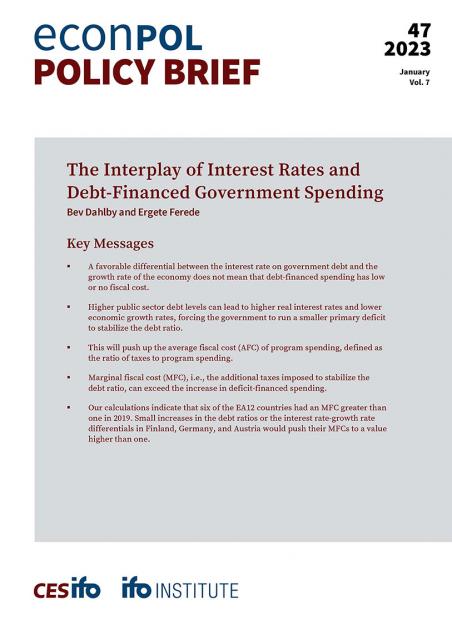The Interplay of Interest Rates and Debt-Financed Government Spending
Key Messages
- A favorable differential between the interest rate on government debt and the growth rate of the economy does not mean that debt-financed spending has low or no fiscal cost.
- Higher public sector debt levels can lead to higher real interest rates and lower economic growth rates, forcing the government to run a smaller primary deficit to stabilize the debt ratio.
- This will push up the average fiscal cost (AFC) of program spending, defined as the ratio of taxes to program spending.
- Marginal fiscal cost (MFC), i.e., the additional taxes imposed to stabilize the debt ratio, can exceed the increase in deficit-financed spending.
- Our calculations indicate that six of the EA12 countries had an MFC greater than one in 2019. Small increases in the debt ratios or the interest rate-growth rate differentials in Finland, Germany, and Austria would push their MFCs to a value higher than one.
Abstract
Proponents focus on the average fiscal cost of program spending when the interest rate on government debt is less than the economy’s growth rate. They ignore the potentially large marginal fiscal cost of deficit-financed increases in spending that arise when a higher public debt increases interest rates on government debt and lowers growth rates.
Series
Download
Citation
Bev Dahlby and Ergete Ferede: “The Interplay of Interest Rates and Debt-Financed Government Spending,” EconPol Policy Brief 47 January 2023.
